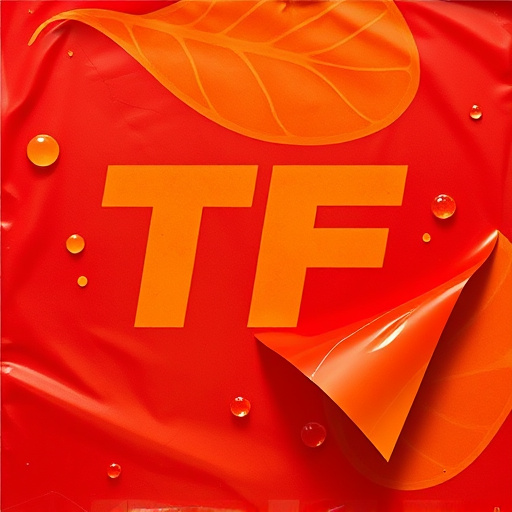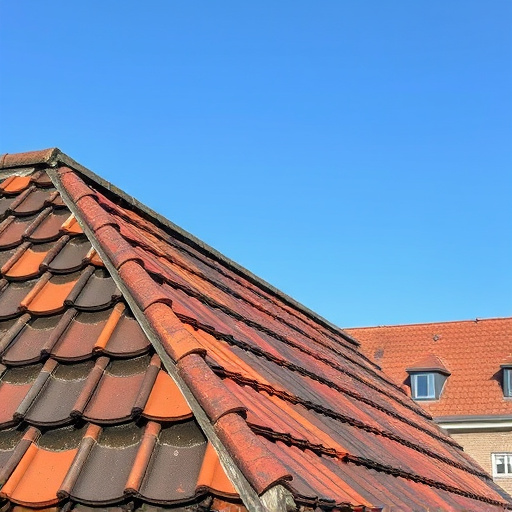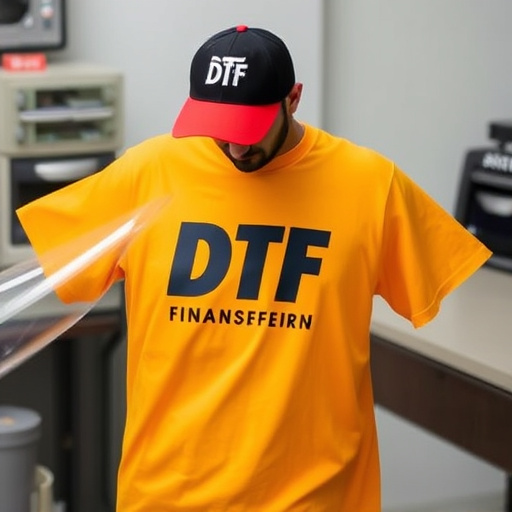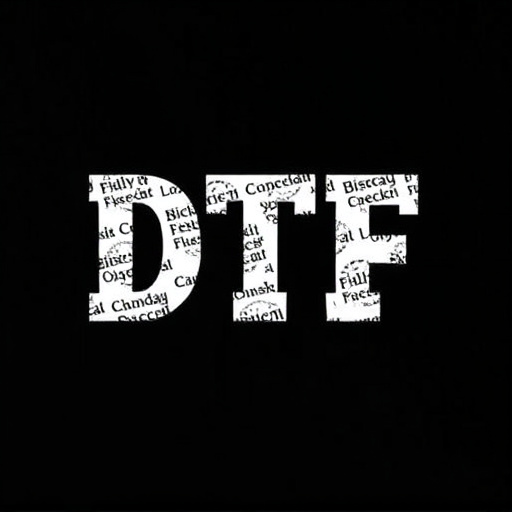Print warping and curling can damage custom clothing prints using Direct-to-Garment (DTG) techniques, leading to distorted images and fabric edges lifting. To prevent these issues, adopt the DTF Cold Peel Film, a game-changing printing technology that acts as a protective layer, minimizing warping and curling for sharp, long-lasting prints on t-shirts and hoodies. Best practices include applying the film to clean, dry surfaces, adhering to manufacturer guidelines for temperature and pressure, peeling at a 180-degree angle, and performing pre-treatment on dark fabrics. Regular printer calibration and maintenance are crucial for achieving crisp, warp-free results.
DTF Cold Peel Film is a game-changer in the printing industry, offering a simple yet powerful solution to a common dilemma—print warping and curling. This innovative film provides an effective barrier between the print surface and the adhesive, significantly reducing these issues. In this article, we’ll explore the challenges of print distortion, introduce DTF Cold Peel Film as a cutting-edge remedy, and provide practical tips for its successful implementation. Discover how this technology can enhance your printing process and produce high-quality, flat results every time.
- Understanding Print Warping and Curling: The Challenges and Their Impact
- Introduction to DTF Cold Peel Film: How It Works and Its Benefits
- Implementing DTF Cold Peel Film: Tips for Effective Use and Best Practices
Understanding Print Warping and Curling: The Challenges and Their Impact

Print warping and curling are common issues that can arise during the custom t-shirt or clothing printing process, especially with direct-to-garment (DTF) printing techniques. Warping refers to the distortion of the printed image, often appearing as a wave-like pattern, while curling occurs when the edges of the fabric lift, creating unsightly bumps in the print. These challenges can significantly impact the quality and longevity of printed garments.
When designing and producing custom t-shirts or printing for hoodies using DTF methods, understanding these issues is crucial. The right materials and application techniques, such as utilizing a DTF cold peel film, play a vital role in mitigating warping and curling. This film acts as a protective barrier between the print and the fabric, ensuring a smooth, crisp finish without the drawbacks of traditional printing methods.
Introduction to DTF Cold Peel Film: How It Works and Its Benefits

DTF Cold Peel Film is a revolutionary innovation in the world of printing and designing, offering a seamless solution for those seeking high-quality custom t shirts or precise dtf prints. This advanced film works by creating a temporary adhesive layer between the design and the substrate, allowing for accurate and durable dtf transfers. When heat is applied, the film softens and peels away, leaving behind a crisp, flutter-free print that’s both visually stunning and long-lasting.
One of the key benefits of DTF Cold Peel Film is its ability to prevent common printing issues like warping and curling, which can plague traditional printing methods. This ensures that your designs, whether for custom t shirts or intricate dtf transfers, maintain their integrity and quality throughout the process. By adopting this cutting-edge film, print shops and designers can enhance their workflow efficiency while delivering exceptional results to their clients.
Implementing DTF Cold Peel Film: Tips for Effective Use and Best Practices

Implementing DTF Cold Peel Film is a strategic move to ensure optimal print quality and prevent common issues like warping and curling. To maximize its effectiveness, adhere to best practices such as using a clean, dry surface for application and following manufacturer guidelines for temperature and pressure settings. The film’s adhesive properties should be leveraged by gently peeling it back at a 180-degree angle post-print, avoiding rapid or forceful removal.
When incorporating DTF Cold Peel Film into your workflow, consider the unique requirements of different fabric types, especially when printing on dark garments. DTF transfers for dark fabrics may necessitate pre-treatment to prevent ink from absorbing too deeply, compromising the film’s adherence. Regular calibration and maintenance of your printer are also crucial, as precision is key in achieving crisp, warp-free prints.
The application of DTF Cold Peel Film proves to be a game-changer in the printing industry, effectively addressing the age-old issues of print warping and curling. By understanding these challenges and implementing best practices for using DTF Cold Peel Film, printers can achieve high-quality, flat prints without the hassle of post-processing. This innovative solution is a testament to how modern technologies can revolutionize print production, ensuring vibrant, accurate results with minimal fuss.














